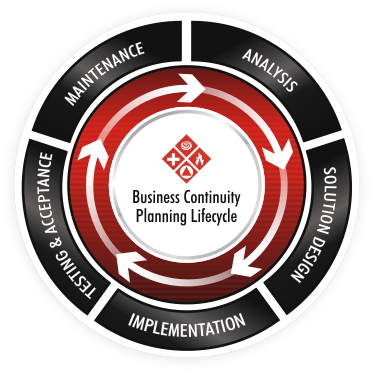Business Continuity/Continuity of Operations Programs
80% of businesses affected by a natural disaster either never reopen or close within 18 months. Businesses without a Continuity Plan have a less than 10% survival rate after a major event. Most companies don't have a plan in place to leverage SITUATIONAL AWARENESS or manage their risk during and after a disaster. It's too difficult to filter available information, specifically how it may or may not impact their organization.
Proactive companies seeking to insulate themselves from these risks take the important step of aligning with an organization that can help them anticipate, react to and recover from these types of events. This also gives them an edge over competitors who lack the foresight to plan for these inevitable risks.
By partnering with Early Alert, you will substantially minimize the loss of life and property, reduce the risk of injury and improve the likelihood that you will not only recover, but survive.
Business continuity encompasses planning and preparation to ensure that an organization can continue to operate in case of serious incidents or disasters and is able to recover to an operational state within a reasonably short period. As such, business continuity includes three key elements and they are:
- Resilience: critical business functions and the supporting infrastructure must be designed in such a way that they are materially unaffected by relevant disruptions, for example through the use of redundancy and spare capacity;
- Recovery: arrangements have to be made to recover or restore critical and less critical business functions that fail for some reason
- Contingency: the organization establishes a generalized capability and readiness to cope effectively with whatever major incidents and disasters occur, including those that were not, and perhaps could not have been, foreseen. Contingency preparations constitute a last-resort response if resilience and recovery arrangements should prove inadequate in practice.
Program Elements Include:
Ongoing management-level process to ensure that necessary steps are regularly taken to identify probable accidents, disasters, emergencies, and/or threats. It also involves
- assessment of the probable effect of such events
- development of recovery strategies and plans
- maintenance of their readiness through personnel training and plan testing.
Business continuity planning (or business continuity and resiliency planning) is the process of creating systems of prevention and recovery to deal with potential threats to a company. 
Any event that could negatively impact operations is included in the plan, such as supply chain interruption, loss of or damage to critical infrastructure (major machinery or computing /network resource). As such, BCP is a subset of risk management. In the US, government entities refer to the process as continuity of operations planning (COOP). A Business Continuity Plan outlines a range of disaster scenarios and the steps the business will take in any particular scenario to return to regular trade. BCP's are written ahead of time and can also include precautions to be put in place. Usually created with the input of key staff as well as stakeholders, a BCP is a set of contingencies to minimize potential harm to businesses during adverse scenarios.
Baseline standards:
Best practice is a feature of accredited management standards that we employ for all of our program features. A key strategy is the ability to balance the unique qualities of an organization with the practices that it has in common with stakeholders. Best practices are always balanced with corporate culture and requirements.
Best practice standards include but not limited to:
- NFPA 1600 - Standard on Disaster/Emergency Management and Business Continuity/Continuity of Operations Programs
- ISO 22301 Business Continuity Management Systems — Requirements
- ISO 27002 Information Security Standard
- Comprehensive Emergency Management Program
- Emergency Management
- Business Continuity/Continuity of Operations Programs
- Extreme Hazardous Weather Services
- Situational Awareness & Critical Decision Support Services
- All Hazard Incident Management Support Team (IMST)
- All Hazard Planning
- COOP & COG
- All Hazard Training
- Training Catalogue
- Training and Events Schedule
Recent News
- DHS issues National Terrorism Advisory System Bulletin... Updated and extended.
09/14/2018 in Department of Homeland Security - Early Alert Technologies, a wholly owned and operated subsidiary of Early Alert, Inc., continues to show success detecting severe weather with their new "tornadoAlert" device.
03/01/2017 in Early Alert - U.S. Monthly Drought Outlook for the U.S.
05/16/2017 in NWS/NOAA


